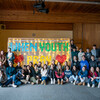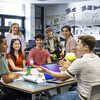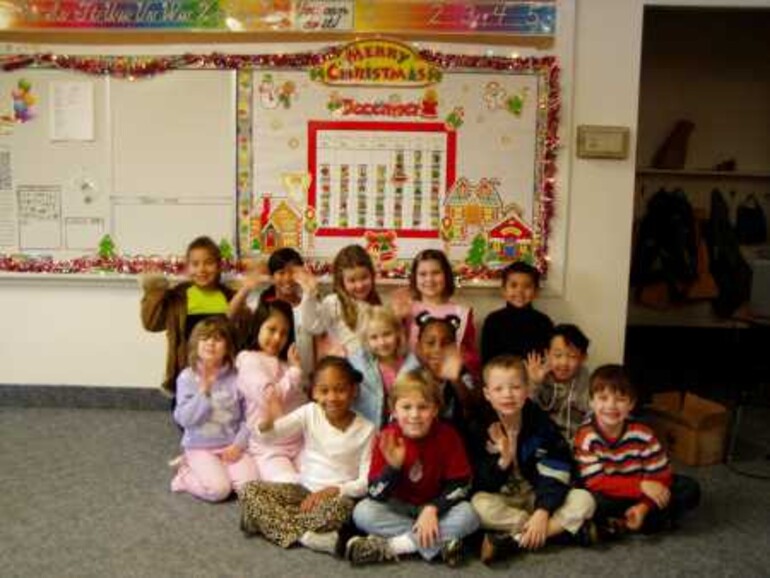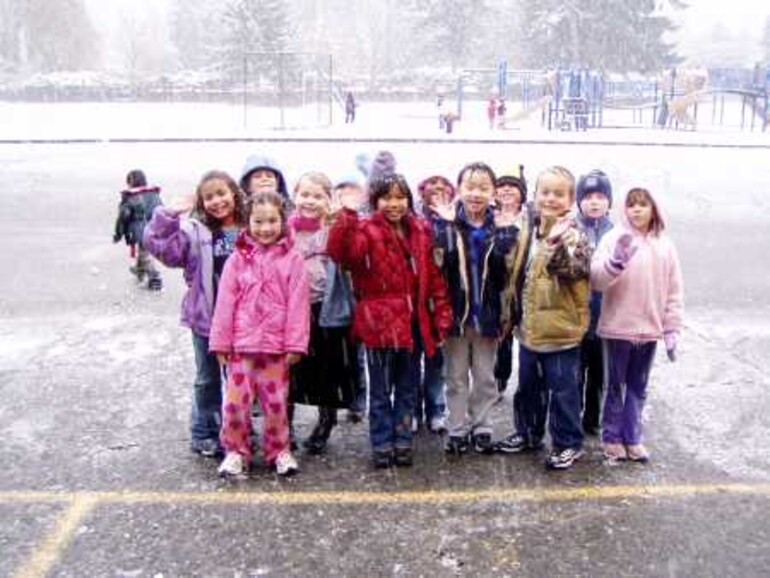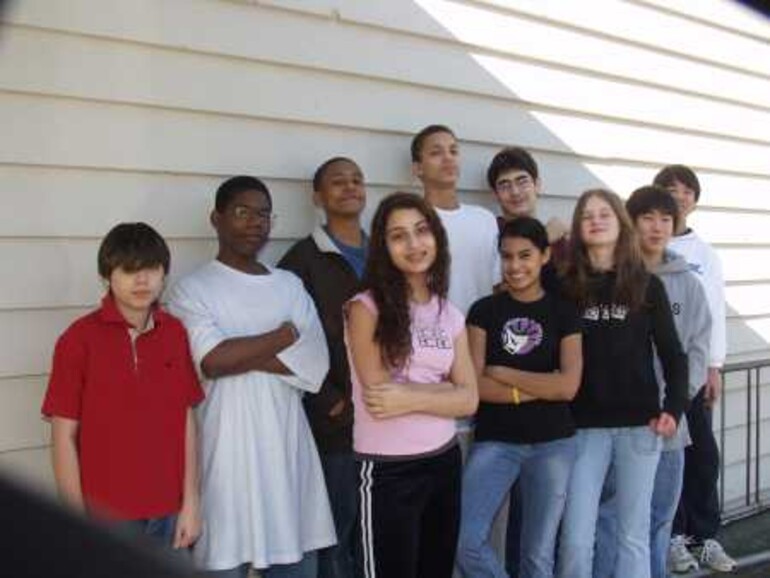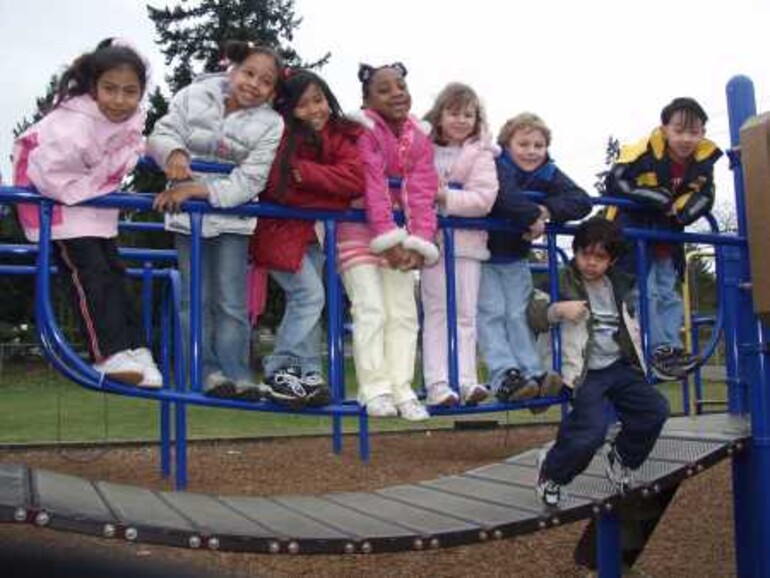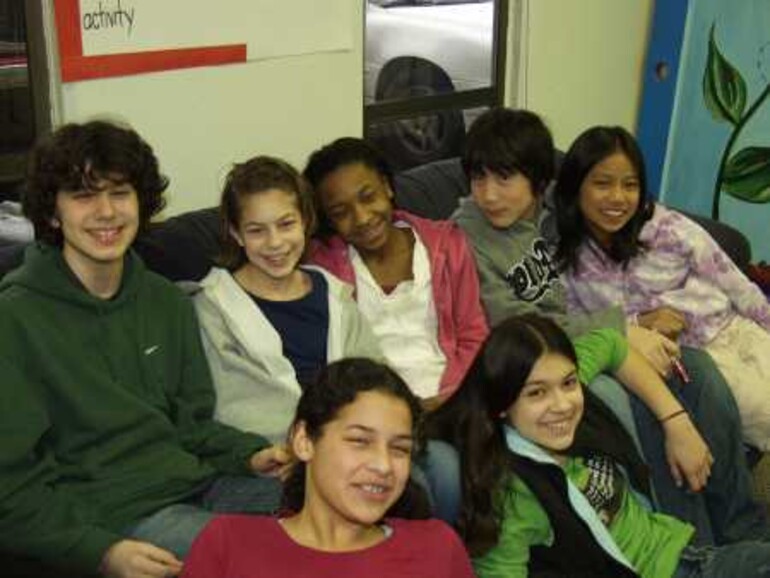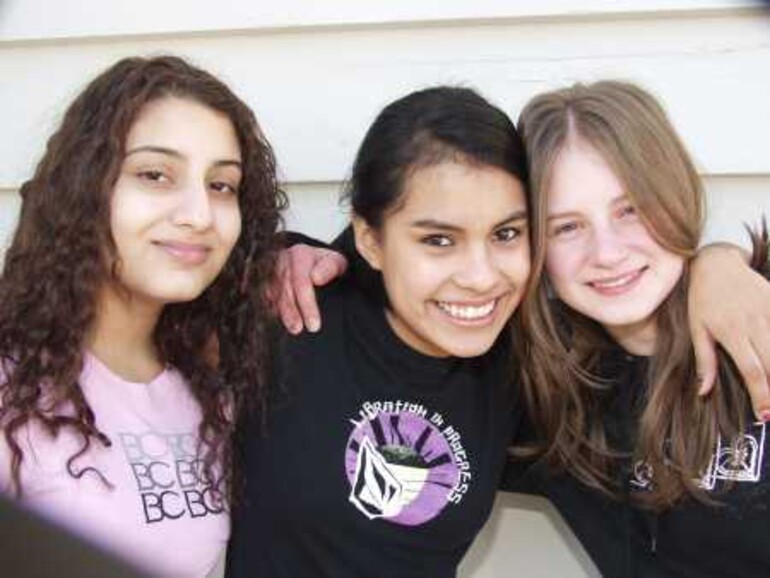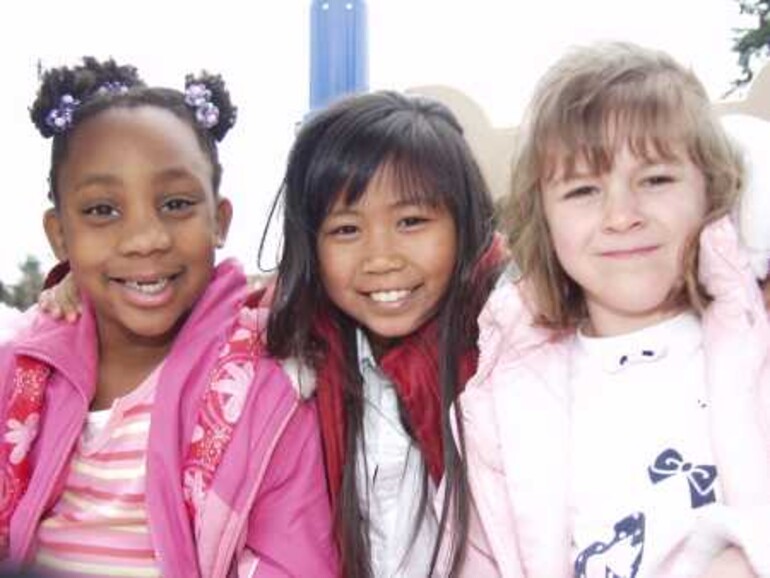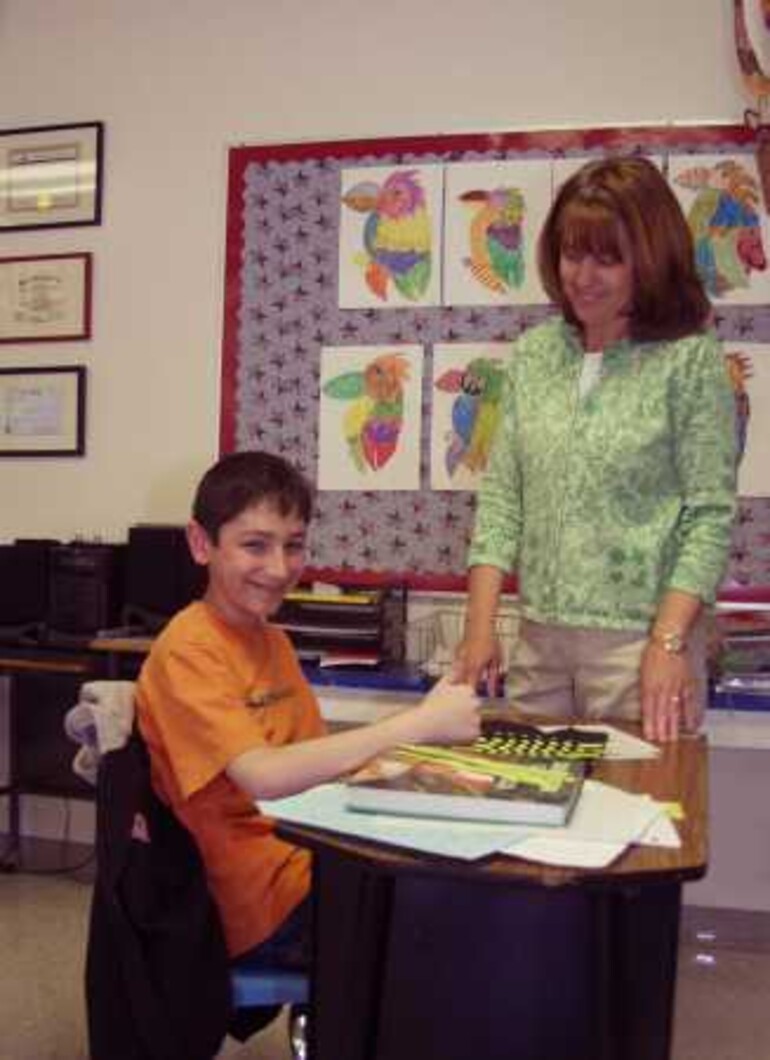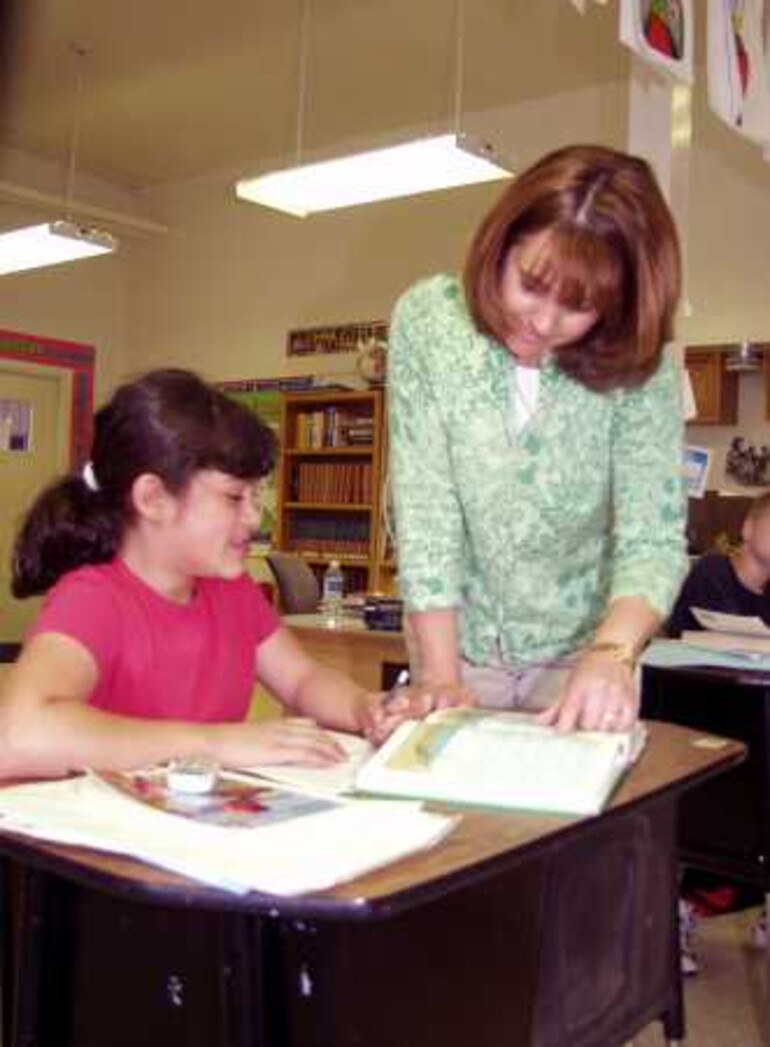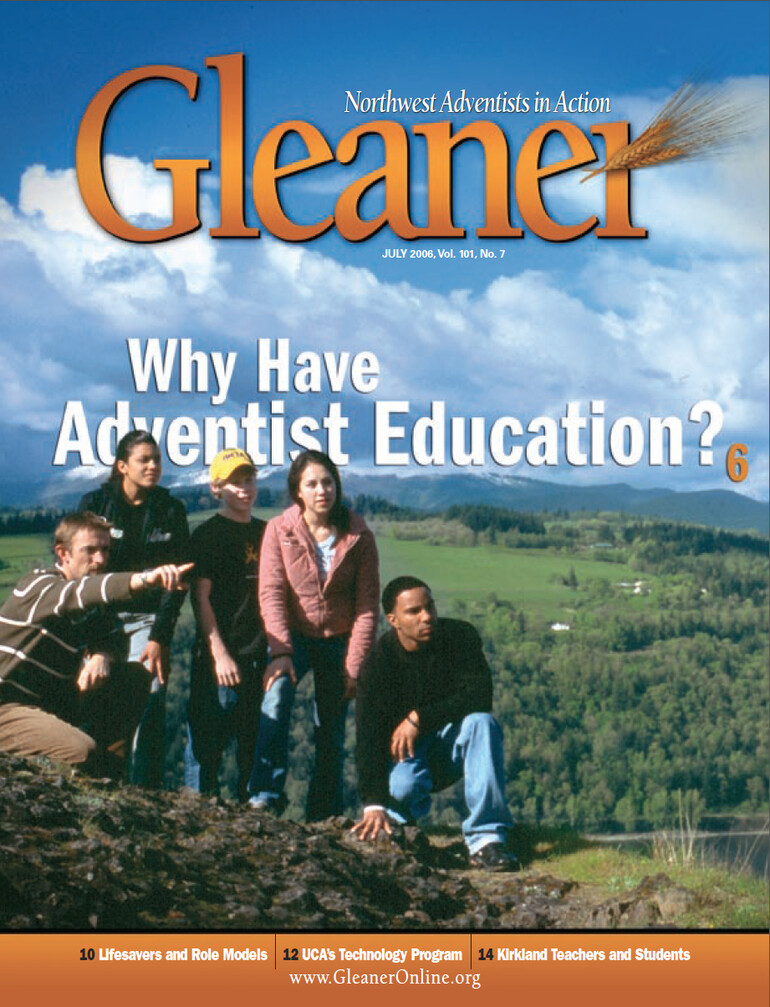Kirkland Teachers and Students Learn from School’s Melting Pot "May I please pray in my own language?” a seventh-grade Russian student asked Shannon Whidden, Kirkland Adventist School teacher. The school sits at the crossroads of the Seattle metro area. Like an ancient trading route, the faces in its classrooms reflect far-flung countries and cultures. Its location—just across Lake Washington from Seattle and between Everett and Renton—serves as a central spot near both Eastside suburbs and Seattle, convenient to the many ethnic groups settling in the metro area. This multicultural melting pot has created a unique learning environment where teachers and students learn together about a variety of cultures through foods, customs, and through the most intimate of communications—prayer. Teachers also work through the challenges of testing and the breaking down of stereotypes. Students speak Korean, Japanese, Spanish and Russian, with ethnic backgrounds varying greatly. Those who speak Russian are from Estonia, Latvia and Moldova. Spanish speakers are from Puerto Rico, Bolivia, Colombia, Mexico, and the Dominican Republic. Classrooms are not only made up of new immigrants, but also include American ethnic groups such as Hispanic, Filipino and African American students. Learning more about my world “We have a lot to learn about how to incorporate multiculturalism into the classroom,” said Jaimie Burton, eighth-grade teacher. “We don’t have any idea most of the time about different cultures and customs. We should inquire more about others’ cultures in the most tactful way.” Students are helping the teachers and other students to learn about their customs and cultures. For example, this year Carolyn Howson’s fourth-graders brought enchiladas and tamales for a school lunch. Besides sharing their customs, older students are challenging stereotypical beliefs. In Adam Dovich’s sixth grade, students studied a literature book about Japanese internment camps. A student with Japanese heritage helped to interpret some of the Japanese words in the book and apply the meanings to the context of the story. She also voiced her displeasure with some of the stereotypes in the book. “When there are students of different races and cultures in a classroom, there is an opportunity to address stereotyping and racism,” said Dovich. “Without those students’ representation and firsthand experience, many stereotypes would go unchallenged.” The academic challenges For students born in other countries, standardized testing can be an obstacle. Vocabulary used in the reading passages in the tests are often far removed from their own experience, said Barbara Heathcock, the school’s second-grade teacher who has also taught older students and watched them read the test questions, unfamiliar with the meanings intended because they were written from an American perspective. Even so, Kirkland suppresses very few tests, and test scores are in the 70th to 80th percentile while the nation’s scores are in the 50th percentile. Everyone is welcome The education that Kirkland offers is also an Adventist education, which means a commitment from local churches that anyone who wants to attend an Adventist school should have that opportunity. “This year we had a donor offer the school $12,000 for scholarships if the school would match the money,” said Doug White, the school’s principal. “By the time school started in August, we had found enough donors to match the money and have been able to provide an Adventist education for more students whose parents couldn’t afford tuition on their own.” Now students from many different economic and ethnic backgrounds learn together, play together and worship together. They bring Russian piroshki for lunch. They complain about writing in cursive because it is so foreign to their own Korean characters. They speak Spanish to one another on the playground. “Because students at Kirkland experience this international mix, they will ultimately relate better as adults,” White said. “This combined with a Christ-centered philosophy will prepare the way for Jesus’ soon return.”
Kirkland Teachers and Students
Learn from School’s Melting Pot
"May I please pray in my own language?” a seventh-grade Russian student asked Shannon Whidden, Kirkland Adventist School teacher.
The school sits at the crossroads of the Seattle metro area. Like an ancient trading route, the faces in its classrooms reflect far-flung countries and cultures. Its location—just across Lake Washington from Seattle and between Everett and Renton—serves as a central spot near both Eastside suburbs and Seattle, convenient to the many ethnic groups settling in the metro area.
This multicultural melting pot has created a unique learning environment where teachers and students learn together about a variety of cultures through foods, customs, and through the most intimate of communications—prayer. Teachers also work through the challenges of testing and the breaking down of stereotypes.
Students speak Korean, Japanese, Spanish and Russian, with ethnic backgrounds varying greatly. Those who speak Russian are from Estonia, Latvia and Moldova. Spanish speakers are from Puerto Rico, Bolivia, Colombia, Mexico, and the Dominican Republic. Classrooms are not only made up of new immigrants, but also include American ethnic groups such as Hispanic, Filipino and African American students.
Learning more about my world
“We have a lot to learn about how to incorporate multiculturalism into the classroom,” said Jaimie Burton, eighth-grade teacher. “We don’t have any idea most of the time about different cultures and customs. We should inquire more about others’ cultures in the most tactful way.”
Students are helping the teachers and other students to learn about their customs and cultures. For example, this year Carolyn Howson’s fourth-graders brought enchiladas and tamales for a school lunch.
Besides sharing their customs, older students are challenging stereotypical beliefs. In Adam Dovich’s sixth grade, students studied a literature book about Japanese internment camps. A student with Japanese heritage helped to interpret some of the Japanese words in the book and apply the meanings to the context of the story. She also voiced her displeasure with some of the stereotypes in the book.
“When there are students of different races and cultures in a classroom, there is an opportunity to address stereotyping and racism,” said Dovich. “Without those students’ representation and firsthand experience, many stereotypes would go unchallenged.”
The academic challenges
For students born in other countries, standardized testing can be an obstacle. Vocabulary used in the reading passages in the tests are often far removed from their own experience, said Barbara Heathcock, the school’s second-grade teacher who has also taught older students and watched them read the test questions, unfamiliar with the meanings intended because they were written from an American perspective.
Even so, Kirkland suppresses very few tests, and test scores are in the 70th to 80th percentile while the nation’s scores are in the 50th percentile.
Everyone is welcome
The education that Kirkland offers is also an Adventist education, which means a commitment from local churches that anyone who wants to attend an Adventist school should have that opportunity.
“This year we had a donor offer the school $12,000 for scholarships if the school would match the money,” said Doug White, the school’s principal. “By the time school started in August, we had found enough donors to match the money and have been able to provide an Adventist education for more students whose parents couldn’t afford tuition on their own.”
Now students from many different economic and ethnic backgrounds learn together, play together and worship together. They bring Russian piroshki for lunch. They complain about writing in cursive because it is so foreign to their own Korean characters. They speak Spanish to one another on the playground.
“Because students at Kirkland experience this international mix, they will ultimately relate better as adults,” White said. “This combined with a Christ-centered philosophy will prepare the way for Jesus’ soon return.”

